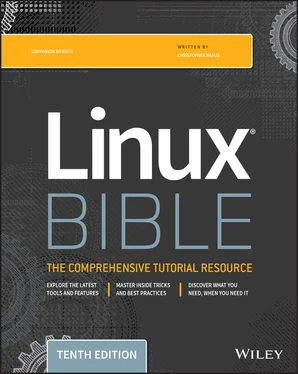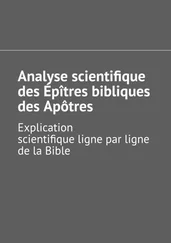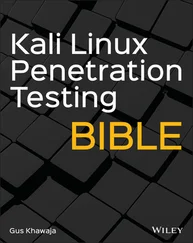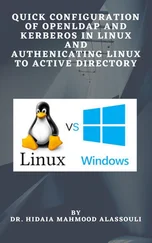Starting up services: To use printers, handle log messages, and provide a variety of system and network services, processes called daemon processes run in the background, waiting for requests to come in. Many types of services run in Linux. Linux provides different ways of starting and stopping these services. In other words, while Linux includes web browsers to view web pages, it can also be the computer that serves up web pages to others. Popular server features include web, mail, database, printer, file, DNS, and DHCP servers.
Programming tools: A wide variety of programming utilities for creating applications and libraries for implementing specialty interfaces are available with Linux.
As someone managing Linux systems, you need to learn how to work with those features just described. While many features can be managed using graphical interfaces, an understanding of the shell command line is critical for someone administering Linux systems.
Modern Linux systems now go way beyond what the first UNIX systems (on which Linux was based) could do. Advanced features in Linux, often used in large enterprises, include the following:
Clustering: Linux can be configured to work in clusters so that multiple systems can appear as one system to the outside world. Services can be configured to pass back and forth between cluster nodes while appearing to those using the services that they are running without interruption.
Virtualization: To manage computing resources more efficiently, Linux can run as a virtualization host. On that host, you could run other Linux systems, Microsoft Windows, BSD, or other operating systems as virtual guests. To the outside world, each of those virtual guests appears as a separate computer. KVM and Xen are two technologies in Linux for creating virtual hosts.
Cloud computing: To manage large-scale virtualization environments, you can use full-blown cloud computing platforms based on Linux. Projects such as OpenStack and Red Hat Virtualization (and its upstream oVirt project) can simultaneously manage many virtualization hosts, virtual networks, user and system authentication, virtual guests, and networked storage. Projects such as Kubernetes can manage containerized applications across massive data centers.
Real-time computing: Linux can be configured for real-time computing, where high-priority processes can expect fast, predictable attention.
Specialized storage: Instead of just storing data on the computer's hard disk, you can store it on many specialized local and networked storage interfaces that are available in Linux. Shared storage devices available in Linux include iSCSI, Fibre Channel, and Infiniband. Entire open source storage platforms include projects such as Ceph ( https://ceph.io) and GlusterFS ( https://www.gluster.org).
Some of these advanced topics are not covered in this book. However, the features covered here for using the shell, working with disks, starting and stopping services, and configuring a variety of servers should serve as a foundation for working with those advanced features.
Understanding How Linux Differs from Other Operating Systems
If you are new to Linux, chances are good that you have used a Microsoft Windows or MacOS operating system. Although MacOS had its roots in a free software operating system, referred to as the Berkeley Software Distribution (more on that later), operating systems from both Microsoft and Apple are considered proprietary operating systems. What that means is the following:
You cannot see the code used to create the operating system, and therefore, you cannot change the operating system at its most basic levels if it doesn't suit your needs, and you can't use the operating system to build your own operating system from source code.
You cannot check the code to find bugs, explore security vulnerabilities, or simply learn what that code is doing.
You may not be able to plug your own software easily into the operating system if the creators of that system don't want to expose the programming interfaces you need to the outside world.
You might look at those statements about proprietary software and say, “What do I care? I'm not a software developer. I don't want to see or change how my operating system is built.”
That may be true. However, the fact that others can take free and open source software and use it as they please has driven the explosive growth of the Internet (think Google), mobile phones (think Android), special computing devices (think TiVo), and hundreds of technology companies. Free software has driven down computing costs and allowed for an explosion of innovation.
Maybe you don't want to use Linux—as Google, Facebook, and other companies have done—to build the foundation for a multi-billion-dollar company. Nonetheless, those companies and others who now rely on Linux to drive their computer infrastructures need more and more people with the skills to run those systems.
You may wonder how a computer system that is so powerful and flexible has come to be free as well. To understand how that could be, you need to see where Linux came from. Thus the next sections of this chapter describe the strange and winding path of the free software movement that led to Linux.
Some histories of Linux begin with the following message entitled “What would you like to see most in minix?” posted by Linus Torvalds to the comp.os.minixnewsgroup on August 25, 1991, at
https://groups.google.com/forum/#!msg/comp.os.minix/dlNtH7RRrGA/SwRavCzVE7gJ
Linus Benedict Torvalds
Hello everybody out there using minix -
I'm doing a (free) operating system (just a hobby, won't be big and professional like gnu) for 386(486) AT clones. This has been brewing since april, and is starting to get ready. I'd like any feedback on things people like/dislike in minix, as my OS resembles it somewhat (same physical layout of the file-system (due to practical reasons, among other things)…Any suggestions are welcome, but I won't promise I'll implement them :-)
Linus ( torvalds@kruuna.helsinki.fi)
PS. Yes — it's free of any minix code, and it has a multi-threaded fs. It is NOT protable[sic] (uses 386 task switching etc), and it probably never will support anything other than AT-harddisks, as that's all I have :-(.
Minix was a UNIX-like operating system that ran on PCs in the early 1990s. Like Minix, Linux was also a clone of the UNIX operating system. With few exceptions, such as Microsoft Windows, most modern computer systems (including MacOS and Linux itself) were derived from UNIX operating systems, created originally by AT&T.
To truly appreciate how a free operating system could have been modeled after a proprietary system from AT&T Bell Laboratories, it helps to understand the culture in which UNIX was created and the chain of events that made the essence of UNIX possible to reproduce freely.
To learn more about how Linux was created, pick up the book Just for Fun: The Story of an Accidental Revolutionary by Linus Torvalds (Harper Collins Publishing, 2001).
Free-flowing UNIX culture at Bell Labs
From the very beginning, the UNIX operating system was created and nurtured in a communal environment. Its creation was not driven by market needs but by a desire to overcome impediments to producing programs. AT&T, which owned the UNIX trademark originally, eventually made UNIX into a commercial product. By that time, however, many of the concepts (and even much of the early code) that made UNIX special had fallen into the public domain.
If you are not old enough to remember when AT&T split up in 1984, you may not remember a time when AT&T was the phone company. Up until the early 1980s, AT&T didn't have to think much about competition because if you wanted a phone in the United States, you had to go to AT&T. It had the luxury of funding pure research projects. The mecca for such projects was the Bell Laboratories site in Murray Hill, New Jersey.
Читать дальше












